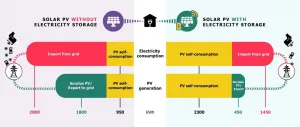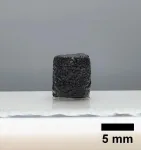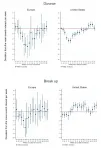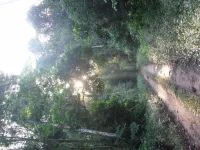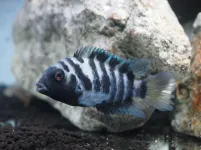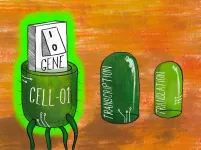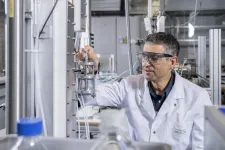Installing solar panels to offset energy costs and reduce the environmental impact of their homes has been gaining popularity with homeowners in recent years. On a global scale, an increasing number of countries are similarly encouraging the installation of solar photovoltaics (PV) at residential buildings to increase the share of renewable energy in their energy mix and enhance energy security. Despite the promising advantages this mode of electricity generation offers there are still a number of challenges that need to be overcome.
Batteries to store excess electricity Solar PV electricity generation peaks during the day when electricity demand is low, resulting in overproduction - especially on weekdays when people are usually not at home. Currently, this excess electricity supply is typically exported to the central electricity grid, but ideally, homes that have solar panels should be able to store overproduction of solar electricity, for example, using batteries, and consume it in the evening when demand is high and there is no solar electricity generation. The problem is that the investment cost for batteries is currently quite high, which makes it economically unprofitable for consumers to pair their solar PV with a battery. In their new study published in the journal Applied Energy, researchers from IIASA, University College London, UK, and Aalto University, Finland, looked into this challenge and proposed different policies to encourage residential electricity consumers to pair solar PV with battery energy storage.
"We wanted to determine whether investing in residential solar PV combined with battery energy storage could be profitable under current market conditions for residential consumers and what kind of support policies can be used to enhance the profitability of stand-alone batteries or PV-battery systems. On top if this, we also wanted to compare the system (or regulatory) cost of each PV-battery policy to the benefit of that particular policy for residential consumers who invest in these technologies," explains lead author Behnam Zakeri, a researcher with the IIASA Energy, Climate, and Environment Program.
Benefits of using battery storage The study shows that without a battery, homeowners only use 30-40% of the electricity from their solar PV panels, while the rest of the electricity is exported to the grid with very little to no benefit for the owner. With a home battery, the self-consumption of solar PV in the building almost doubles, allowing the residents to reduce electricity imports from the grid by up to 84%, which can in turn help the owner to become less dependent on the grid and electricity prices. In addition, the researchers found that while PV-batteries are presently not really profitable for residential consumers, they can become so with the implementation of slightly different policies and regulations, even in high-latitude countries where solar irradiation is relatively low.
Energy policies for a decentralized energy system The authors propose some novel energy storage polices that offer a positive return on investment between 40% and 70% for residential PV-battery storage, depending on the policy. These include, among others that national renewable energy policies adopt more innovative incentives to enhance the economic profitability of decentralized green energy solutions based on the contribution of these systems to the grid. The results indicate that this can be easily achieved by, for example, rewarding consumers for using their solar PV generation onsite, instead of encouraging them to export the excess solar energy they produce to the grid.
The researchers further posit that the way utility companies and electricity distribution firms generate income today may itself be a hindrance to promoting the self-consumption of renewable energy in buildings, as these companies generally charge consumers for each unit of electricity imported from the grid. If consumers therefore become independent from the grid, grid operators and utility companies would lose a significant part of their income. Such a scenario calls for new business models and operating modes to guarantee that central utilities do not see decentralized solutions as a threat to their revenues.
In today's renewable electricity generation environment, capital subsidies are one option to partly pay for investment in batteries. The study points out that these policies are costly for the system, and may not automatically result in system-level benefits as they do not reward the optimal use of batteries. In this regard, Zakeri and his colleagues propose a "storage policy" that rewards residential battery owners to store and discharge electricity whenever the system needs it. The profitability of PV-battery systems of course also depends on the type of retail pricing mechanism in the system. The findings indicate that dynamic electricity pricing at the consumer side, such as hourly electricity prices with an enhanced gap between off-peak and peak prices, will encourage consumers to use home batteries to benefit from charging at low price hours and discharging the battery when the electricity price is high. This way of operating a home battery could help reduce the pressure on the electricity grid at peak times, which has significant benefits for the system.
"Traditional, central energy structures are transitioning to new systems based on decentralized, renewable energy solutions. This requires more flexible, modern, and effective policies that can guarantee the social and economic benefits of the energy transition. We hope our analysis contributes to a better understanding of the role of some energy policies that can promote decentralized energy solutions," Zakeri concludes.
INFORMATION:
Reference
Zakeri, B., Cross, S., Dodds, P., Castagneto Gissey, G. (2021). Policy options for enhancing economic profitability of residential solar photovoltaic with battery energy storage. Applied Energy DOI: 10.1016/j.apenergy.2021.116697
Contacts:
Researcher contact
Behnam Zakeri
Research Scholar
Integrated Assessment and Climate Change Research Group (IACC)
Sustainable Service Systems Research Group (S3)
Energy, Climate, and Environment (ECE) Program
Tel: +43 2236 807 532
zakeri@iiasa.ac.at
Press Officer
Ansa Heyl
IIASA Press Office
Tel: +43 2236 807 574
Mob: +43 676 83 807 574
heyl@iiasa.ac.at
About IIASA:
The International Institute for Applied Systems Analysis (IIASA) is an international scientific institute that conducts research into the critical issues of global environmental, economic, technological, and social change that we face in the twenty-first century. Our findings provide valuable options to policymakers to shape the future of our changing world. IIASA is independent and funded by prestigious research funding agencies in Africa, the Americas, Asia, and Europe.
http://www.iiasa.ac.at
